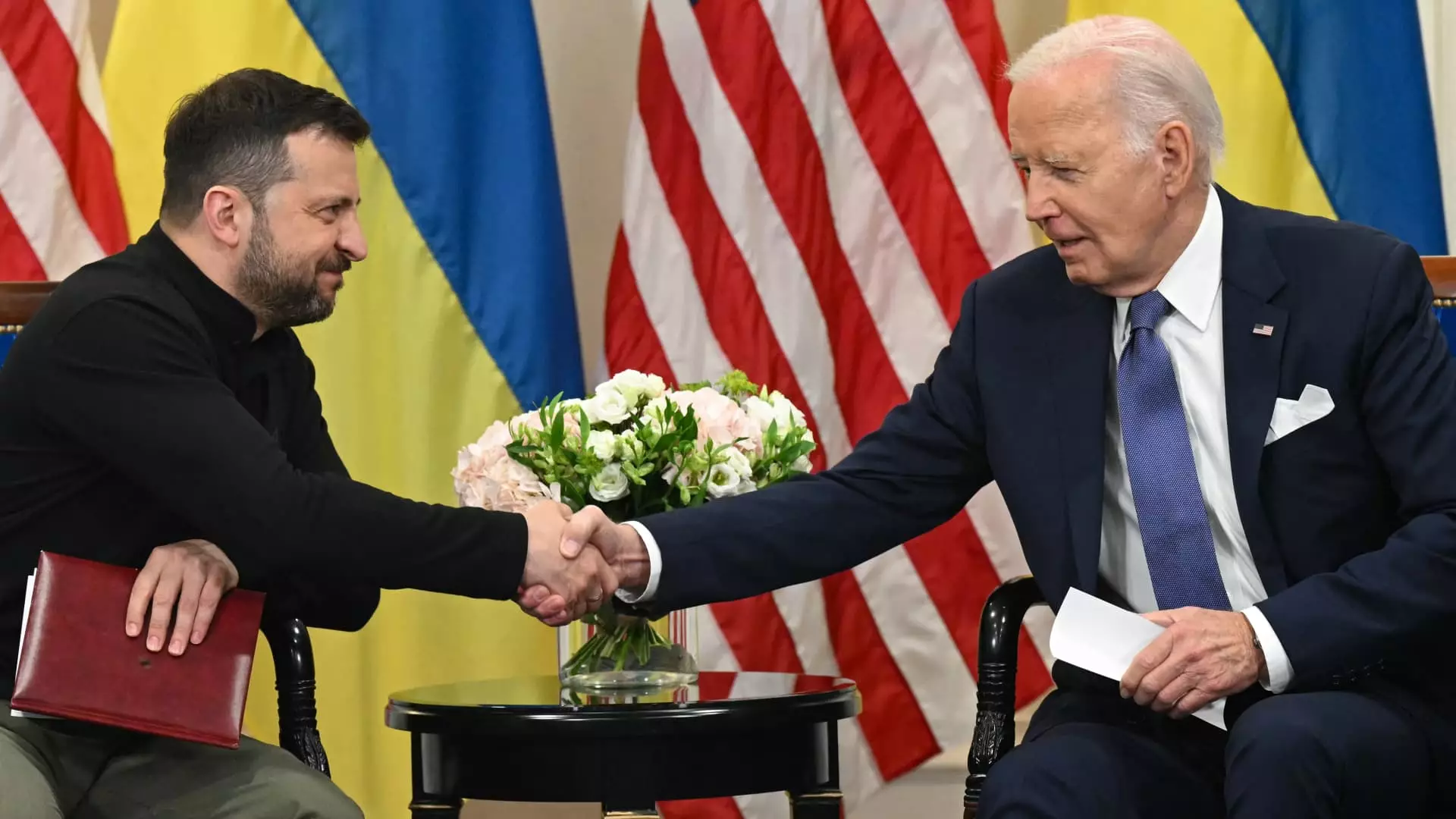In a bold move just weeks before the inauguration of President-elect Donald Trump, President Joe Biden unveiled an expansive aid package for Ukraine on Monday, totaling nearly $6 billion. This funding consists of $2.5 billion in military assistance and an additional $3.4 billion in budgetary support – an initiative designed to fortify Ukraine as it endures relentless assaults from Russian forces. Biden’s resolute commitment during this transitional period reflects a determination to maintain a strong American position in support of Ukraine, emphasizing the urgent need for immediate and effective assistance.
Biden’s announcement included a substantial $1.25 billion in military aid sourced from U.S. stockpiles, complemented by a $1.22 billion contribution under the Ukraine Security Assistance Initiative (USAI). The significance of this USAI package cannot be understated, as it outlines a procurement strategy that relies on American defense contractors rather than depleting existing stockpiles. While the intention aims to create a sustainable military support structure for Ukraine, the reliance on defense industry timelines often implies that the delivery of these essential military assets could take months or even years.
As the situation on the ground intensifies, the presence of foreign troops in the Russian ranks, specifically from North Korea, highlights the desperation of Moscow’s military strategy. Reports indicate that North Korean soldiers have encountered severe casualties, with around 1,000 troops reportedly killed or wounded within a single week in the Kursk region – a clear indicator of escalating violence as the conflict continues.
In light of these developments, Biden articulated the importance of the new package for Ukraine’s military capabilities. The potential to receive both immediate and long-term military aid—including advanced air defense, artillery systems, and critical weaponry—aims to significantly bolster Ukraine’s defense efforts as winter approaches. With the progress of the war approaching its third anniversary, the U.S. has been pivotal, allocating approximately $175 billion in various forms of assistance since Russia’s invasion in February 2022.
Despite the current commitment of resources, uncertainty looms over future U.S. aid under a Trump administration. Trump has openly expressed a desire to conclude the conflict swiftly and has suggested that European allies should shoulder more financial responsibility for Ukraine’s defense. This stance raises concerns among advocates for Ukraine, as bipartisan support in Congress may falter, especially with Republican control beginning early next month. Such a shift in sentiment could have profound implications for Ukraine’s ability to sustain its defense and recover from the ravages of war.
Yellen’s emphasis on the continued necessity of economic aid points to the critical role of financial stability in buttressing Ukraine’s government amidst an ongoing military conflict. She noted that this funding is essential for maintaining public services—including the payment of salaries for essential workers like teachers—ensuring that the Ukrainian government remains functional and resilient.
As the Biden administration prepares to transition, the focus remains on achieving a balance between immediate military needs and longer-term strategic objectives. Yellen’s assertions that Ukraine’s success aligns with America’s core national interest encapsulate the broader geopolitical stakes involved. With the ongoing struggle against Russian aggression, maintaining a unified and robust international response is vital, not just for Ukraine, but for the stability of the region and the integrity of established international norms.
The trajectory of U.S. support for Ukraine hinges on the evolving political landscape and the scope of bipartisan consensus. As stakeholders within the American political system grapple with the realities of military aid, the emphasis on a just peace remains paramount. U.S. officials are tasked with a delicate balancing act in supporting Ukraine while navigating domestic concerns about fiscal prudence and international obligations.
While the recent announcements signal unwavering support in the short term, the looming question remains: How will changing political dynamics shape the future of U.S. assistance to Ukraine? The consequences of this pivotal moment are likely to resonate far beyond the battlefield, influencing the broader framework of international relations in the years to come.


Leave a Reply